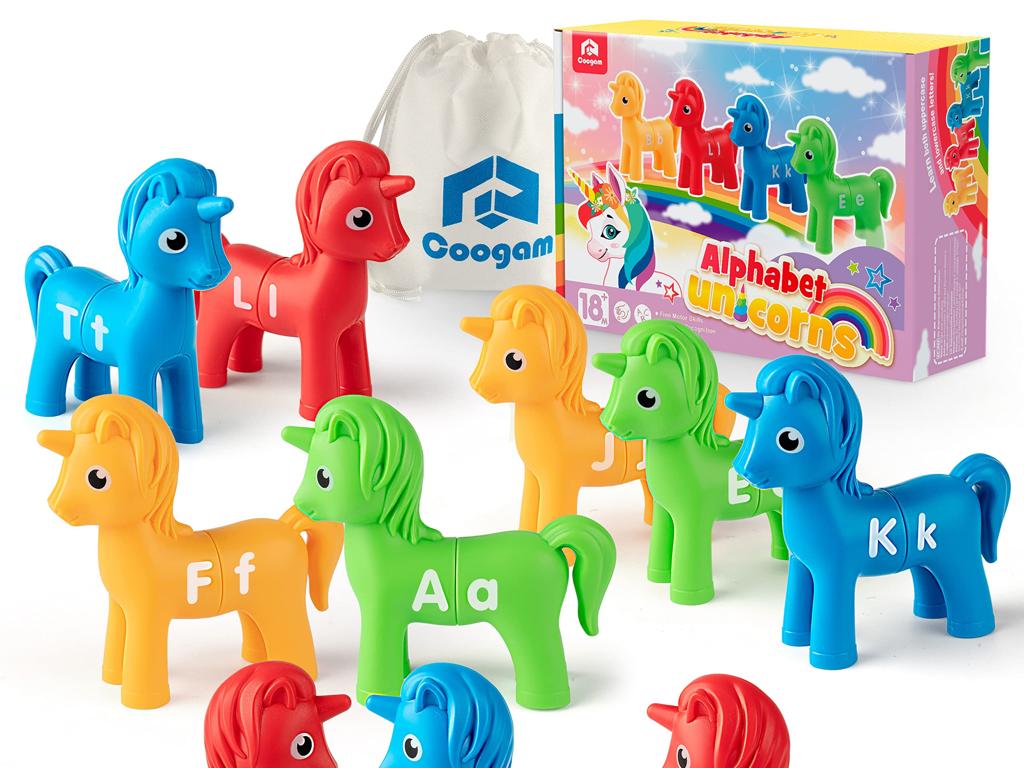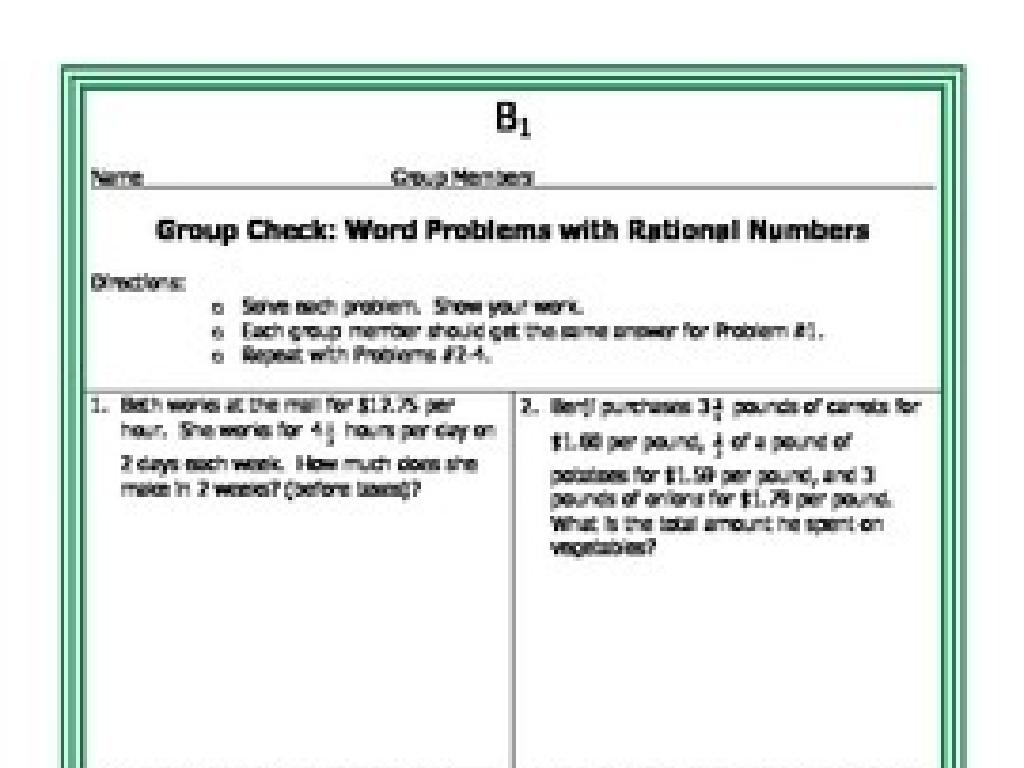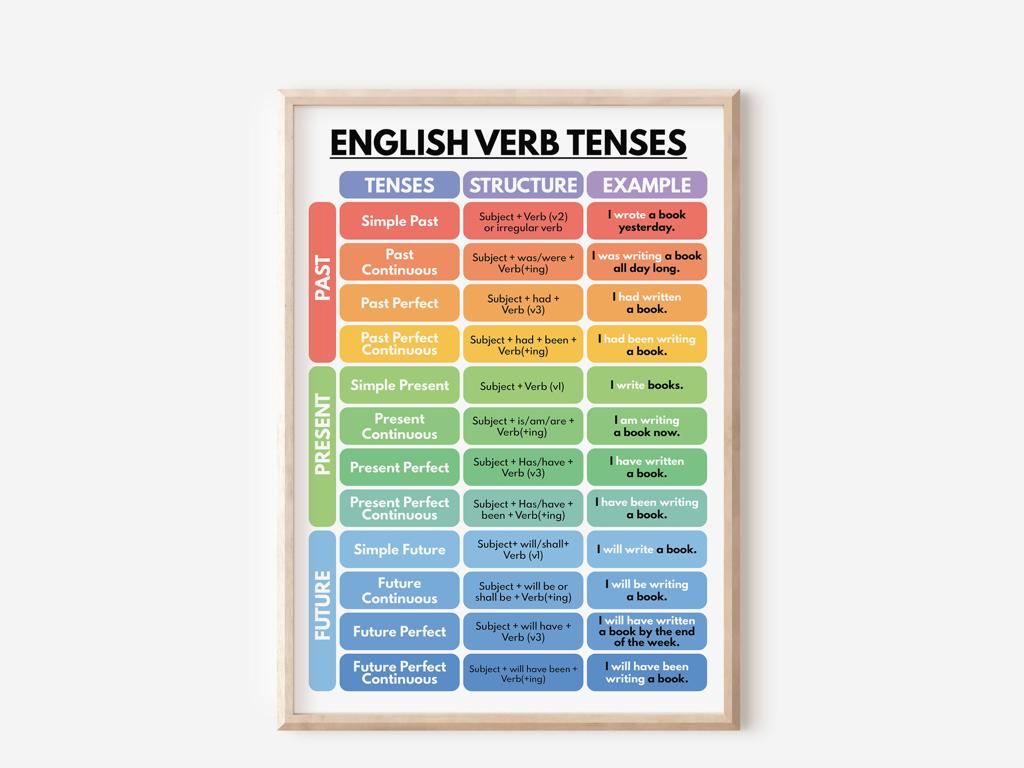Add Three Numbers Up To Four Digits Each: Word Problems
Subject: Math
Grade: Third grade
Topic: Addition: Four Or Five Digits
Please LOG IN to download the presentation. Access is available to registered users only.
View More Content
Today’s Adventure: Adding Big Numbers!
– Explore addition of large numbers
– Combine numbers to find totals
– Like stacking blocks, we stack numbers to see how high they go!
– Addition’s role in daily life
– Use addition when shopping or saving money
– Practice with word problems
– Solve problems about things like combining class points
|
This slide introduces the concept of adding larger numbers, which is a fundamental skill in mathematics. Start by engaging students with the idea that they are going on an adventure to explore the world of big numbers. Explain that addition is like putting numbers together to find out how much they have in total. Emphasize the importance of addition in everyday life, such as when managing money or keeping track of time. Encourage students to think of addition as a useful tool rather than just a math operation. Provide examples of word problems that they might encounter in real life to illustrate the practical applications of addition. The goal is to make students comfortable with adding larger numbers and to understand why it’s a valuable skill to learn.
Addition Vocabulary and Signs
– Addends: Numbers we add
– Sum: The total of addends
– Recognize ‘plus’ and ‘equals’
– Practice with word problems
– Use story problems to apply our addition vocabulary and signs
|
This slide introduces the basic vocabulary and symbols used in addition, tailored for a third-grade math class. The term ‘addends’ refers to the numbers that are being added together. ‘Sum’ is the result of this addition. It’s crucial for students to be able to identify and use the ‘plus’ (+) and ‘equals’ (=) signs correctly when performing addition. After explaining these terms, provide students with several word problems that require adding three numbers up to four digits each. This will help them apply their understanding of the vocabulary and symbols in practical scenarios. Encourage students to verbalize their thought process as they solve the problems to reinforce their learning.
Adding Three Large Numbers
– Step-by-step addition
– Line up the numbers vertically and add each column
– Example: 1234 + 567 + 89
– Let’s add: 1234, 567, and 89. What’s the sum?
– Start from the rightmost digit
– Add units, then tens, hundreds, and so on
|
This slide introduces students to the concept of adding three numbers, each up to four digits. Begin by explaining the importance of lining up the numbers by their place value. Demonstrate the process using an example, such as 1234 + 567 + 89. Emphasize starting from the rightmost digit, which is the units place, and moving left through tens, hundreds, and thousands. Encourage students to practice this method with different sets of numbers to build their confidence and proficiency in addition. Provide additional examples and practice problems for students to work on individually or in groups.
Word Problems: Understanding the Story
– What are word problems?
– They are math questions in a story format
– Read the problem carefully
– Take your time to understand the story
– Find the numbers involved
– Look for and highlight the important numbers
– Discover what to solve for
– Understand what the question is asking
|
This slide introduces students to the concept of word problems in math, emphasizing the importance of understanding the context and identifying the numerical information required to solve the problem. Word problems help students apply math to real-life situations, enhancing their critical thinking skills. Encourage students to read the problem multiple times, if necessary, to grasp the scenario fully. Teach them to pinpoint key numbers and phrases that indicate mathematical operations. Finally, guide them to determine what the problem is asking them to find, whether it’s a total, difference, product, or quotient. Provide examples and practice problems to reinforce these skills.
Solving Word Problems with Addition
– Read the problem carefully
– Understand the story before solving
– Highlight key numbers
– Find and circle numbers to add
– Choose the right operation
– We’re adding, so look for clues to combine totals
– Solve and double-check
– Add numbers and verify with a friend or teacher
|
This slide is aimed at guiding third-grade students through the process of solving addition word problems involving three numbers with up to four digits each. Emphasize the importance of reading the problem thoroughly to understand the scenario. Teach students to identify and circle the numbers that are relevant to the problem. Discuss how to recognize when to use addition by looking for keywords that suggest combining amounts, such as ‘total’ or ‘altogether’. After solving, encourage students to check their work by adding the numbers again or using the inverse operation (subtraction) to ensure accuracy. Provide examples and practice problems for students to apply these steps.
Let’s Practice Addition with Word Problems!
– John, Maria, and Alex’s baseball cards
– Add: 1234 + 567 + 89 cards
– Start with the largest number, then add each number one by one
– Solve the problem step by step
– Line up the digits by place value and add
– Find the total number of cards
– Add all the sums to get the total
|
This slide is designed for a class activity where students will learn to add three numbers with up to four digits through a relatable word problem. Begin by reading the problem aloud and ask the students to visualize the scenario with the baseball cards. Guide them through the process of addition by starting with the largest number and adding each subsequent number carefully, ensuring that the digits are lined up by their place values. Encourage students to double-check their work. After solving the problem as a class, ask students to explain the steps they took to find the answer, reinforcing their understanding of the addition process. Prepare to offer additional similar problems for practice and ensure to praise their efforts to build confidence.
Independent Practice: Adding Large Numbers
– Try solving word problems alone
– Use the steps we learned in class
– Add numbers carefully, one column at a time
– For example, 1234 + 5678 + 910, start with the ones place
– Check your work when finished
– Double-check your answers for mistakes
|
This slide is meant to encourage students to apply the addition steps they’ve learned to solve word problems independently. Remind them to tackle the problems one step at a time, starting with the rightmost digits and moving left, ensuring they line up the numbers by place value. Emphasize the importance of checking their work for possible errors. Provide several word problems for them to practice, each with three numbers to add. For example, ‘If you have 1,234 marbles, your friend gives you 5,678 more, and you find another 910 in a box, how many marbles do you have in total?’ Offer support and guidance as needed, and encourage students to share their solutions and thought processes with the class.
Class Activity: Math Relay Race
– Teams solve addition problems
– Each member solves a part
– Race to find the correct sum
– Teamwork and accuracy win!
|
This activity is designed to encourage teamwork and reinforce the concept of addition with large numbers. Divide the class into small groups, ensuring an equal number of members in each team. Provide each team with a multi-step addition problem involving three numbers up to four digits each. Assign each team member a specific part of the problem to solve. Once a team member solves their part, they pass the problem to the next member. The first team to arrive at the correct total sum wins the relay race. Ensure that each team double-checks their work before submitting their final answer to promote accuracy as well as speed. Possible variations of the activity could include using different word problems for each team, incorporating a physical relay component, or having teams solve problems on the board in front of the class.
Conclusion: Mastering Addition of Three Numbers
– Celebrate your addition skills
– Review steps for solving word problems
– Read carefully, write the numbers, add them up
– Emphasize the value of practice
– The more you practice, the better you get!
– Encourage home practice
– Try more problems at home to become a pro
|
As we wrap up today’s lesson on adding three numbers up to four digits each, it’s important to recognize the students’ hard work. Reinforce the steps they’ve learned for tackling word problems: understanding the question, identifying the numbers involved, and performing the addition. Remind them that becoming proficient in math requires practice, just like learning to play an instrument or a sport. Encourage them to continue practicing at home with additional problems and to come back to class ready to share their progress. Provide a few example problems for them to take home and work on as a way to continue building their confidence and skills.






